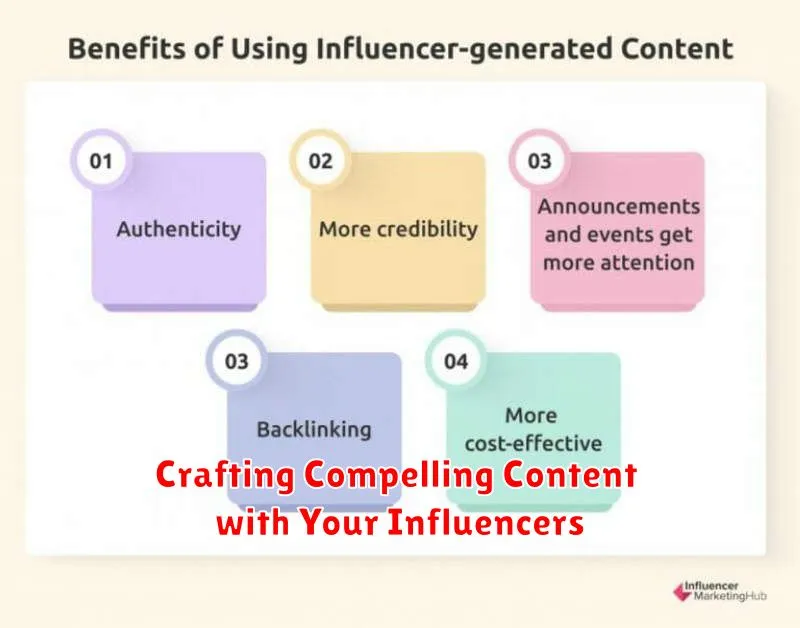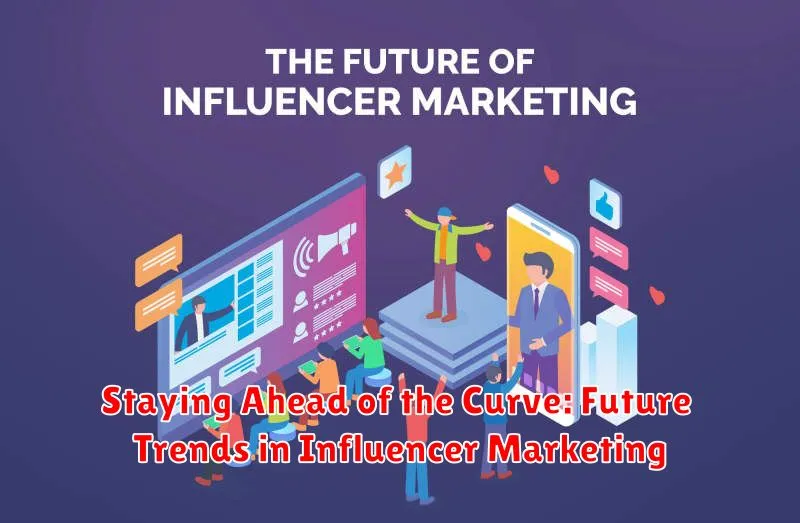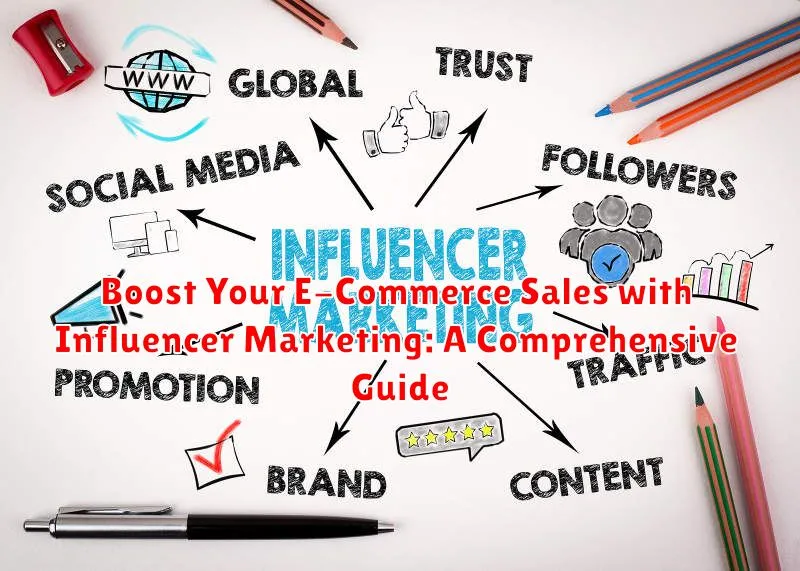In today’s competitive digital landscape, e-commerce businesses are constantly seeking innovative strategies to boost sales and expand their reach. Influencer marketing has emerged as a powerful tool for driving e-commerce growth, leveraging the trust and engagement that influencers cultivate with their dedicated audiences. This comprehensive guide delves into the world of influencer marketing for e-commerce, providing actionable insights and strategies to effectively integrate influencers into your marketing campaigns and achieve measurable results.
Discover how to identify the right influencers for your e-commerce brand, negotiate successful partnerships, and develop compelling campaigns that resonate with your target market. From micro-influencers to celebrity endorsements, explore the various types of influencer collaborations and learn how to measure the return on investment (ROI) of your influencer marketing initiatives. This guide will equip you with the knowledge and tools to harness the power of influencer marketing and unlock significant e-commerce sales growth.
Understanding the Power of Influencer Marketing
In today’s digital landscape, consumers are constantly bombarded with advertising. This has led to a decline in trust for traditional advertising methods. Influencer marketing offers a powerful alternative. It leverages the authenticity and reach of individuals who have established credibility and a loyal following within specific niches.
Influencers cultivate strong relationships with their audience, built on trust and shared interests. When an influencer recommends a product or service, their followers are more likely to perceive it as a genuine endorsement rather than a paid advertisement. This organic approach can significantly impact consumer purchasing decisions.
Influencer marketing allows for targeted reach, connecting your brand with potential customers who are already interested in your niche. By partnering with the right influencers, you can effectively reach specific demographics and interest groups, maximizing your marketing ROI.
Identifying the Right Influencers for Your Brand
Choosing the right influencers is crucial for a successful campaign. Relevance is key. Look for influencers whose audience aligns with your target demographic. An influencer specializing in tech gadgets won’t be effective if you’re selling organic baby food.
Engagement is another critical factor. A large follower count doesn’t necessarily translate to high engagement. Analyze the influencer’s posts for likes, comments, and shares. High engagement suggests an active and involved audience, more likely to interact with your brand.
Consider the influencer’s authenticity. Do they genuinely believe in the products or services they promote? Authenticity builds trust with their audience, making their endorsements more impactful. Look for influencers who align with your brand values and have a history of promoting similar products.
Finally, consider the reach of the influencer. This refers to the size of their audience. While mega-influencers have a vast reach, micro-influencers with smaller, highly engaged audiences can often deliver better results, especially for niche products.
Setting Clear Goals and Objectives for Your Campaign
Before launching any influencer marketing campaign, establishing clear goals and objectives is paramount. This provides direction and allows for accurate measurement of success. Clearly defined goals tie your influencer activities directly to your overall business objectives.
Consider what you want to achieve with your campaign. Do you aim to increase brand awareness, drive sales, generate leads, or boost website traffic? Each objective requires a different approach and set of metrics.
Examples of specific, measurable, achievable, relevant, and time-bound (SMART) objectives include:
- Increase website traffic by 15% within three months of campaign launch.
- Generate 500 qualified leads through influencer-promoted content within two months.
- Achieve a 10% sales uplift for a specific product line within the first month of the campaign.
By setting SMART goals, you create a roadmap for your campaign and provide a benchmark against which to measure its performance.
Crafting Compelling Content with Your Influencers

Collaborating effectively with influencers means creating content that resonates with their audience while promoting your brand. Authenticity is key. Forced or overly promotional content can damage an influencer’s credibility and your brand’s image. Instead, focus on developing content that feels organic and integrates your products seamlessly into the influencer’s established style.
Start by providing influencers with clear briefs outlining your campaign goals, target audience, and key messages. However, allow them creative freedom within these guidelines. Their understanding of their audience’s preferences is invaluable.
Consider different content formats. Product reviews, tutorials, and behind-the-scenes glimpses can all be effective. Encourage storytelling to connect emotionally with the audience. Showcase how your product solves a problem or enhances their lives.
Transparency is crucial. Clearly disclose the partnership between your brand and the influencer. This builds trust with the audience and ensures compliance with advertising regulations.
Measuring the Success of Your Influencer Marketing Campaigns
Accurately measuring the success of your influencer marketing campaigns is crucial for optimizing future strategies and demonstrating return on investment. Key Performance Indicators (KPIs) should be established from the outset and aligned with your campaign goals.
For brand awareness campaigns, track metrics like reach, impressions, and social media engagement (likes, comments, shares). An increase in website traffic originating from influencer platforms can also indicate success.
Sales-driven campaigns require different KPIs. Focus on metrics like conversion rates, click-through rates on affiliate links, and the use of unique promo codes. Track the revenue generated directly attributable to each influencer’s efforts.
Utilize analytics dashboards provided by social media platforms and influencer marketing platforms to monitor these metrics. Regularly analyze the data to understand what’s working and what needs adjustment. This data-driven approach allows for continuous improvement and maximizes the impact of your influencer marketing investments.
Building Long-Term Relationships with Influencers
Long-term partnerships with influencers offer significantly more value than one-off campaigns. Cultivating these relationships fosters trust with the influencer’s audience and creates consistent brand messaging. This translates into stronger brand recognition and increased customer loyalty over time.
Start by identifying influencers whose values align with your brand. Look beyond follower count and focus on engagement rates and audience demographics. Authenticity is key. A genuine connection between the influencer and your brand resonates more effectively with their audience.
Treat influencers as business partners. Offer fair compensation, involve them in the creative process, and provide clear campaign goals. Open communication and mutual respect are essential for a successful long-term relationship.
Nurturing the relationship beyond individual campaigns is crucial. Stay in touch, share updates about your brand, and consider offering exclusive opportunities or early access to new products. These small gestures can solidify the partnership and create a mutually beneficial alliance.
Staying Ahead of the Curve: Future Trends in Influencer Marketing

The influencer marketing landscape is constantly evolving. To maximize your return on investment, it’s crucial to stay ahead of emerging trends. Short-form video content continues its rise in popularity, offering engaging and easily digestible formats. Platforms like TikTok and Instagram Reels are becoming increasingly important for influencer collaborations.
Authenticity remains a key factor. Consumers are more discerning and can spot inauthentic partnerships. Influencers who prioritize genuine engagement and transparently disclose sponsored content will build stronger trust with their audience, leading to more effective campaigns. Look for influencers who align with your brand values and have a genuine interest in your products or services.
Data-driven influencer marketing will become even more critical. Utilizing analytics to track campaign performance, measure ROI, and identify the most effective influencers will be essential. This data-driven approach will allow for more strategic and targeted campaigns, optimizing budget allocation and maximizing impact.

